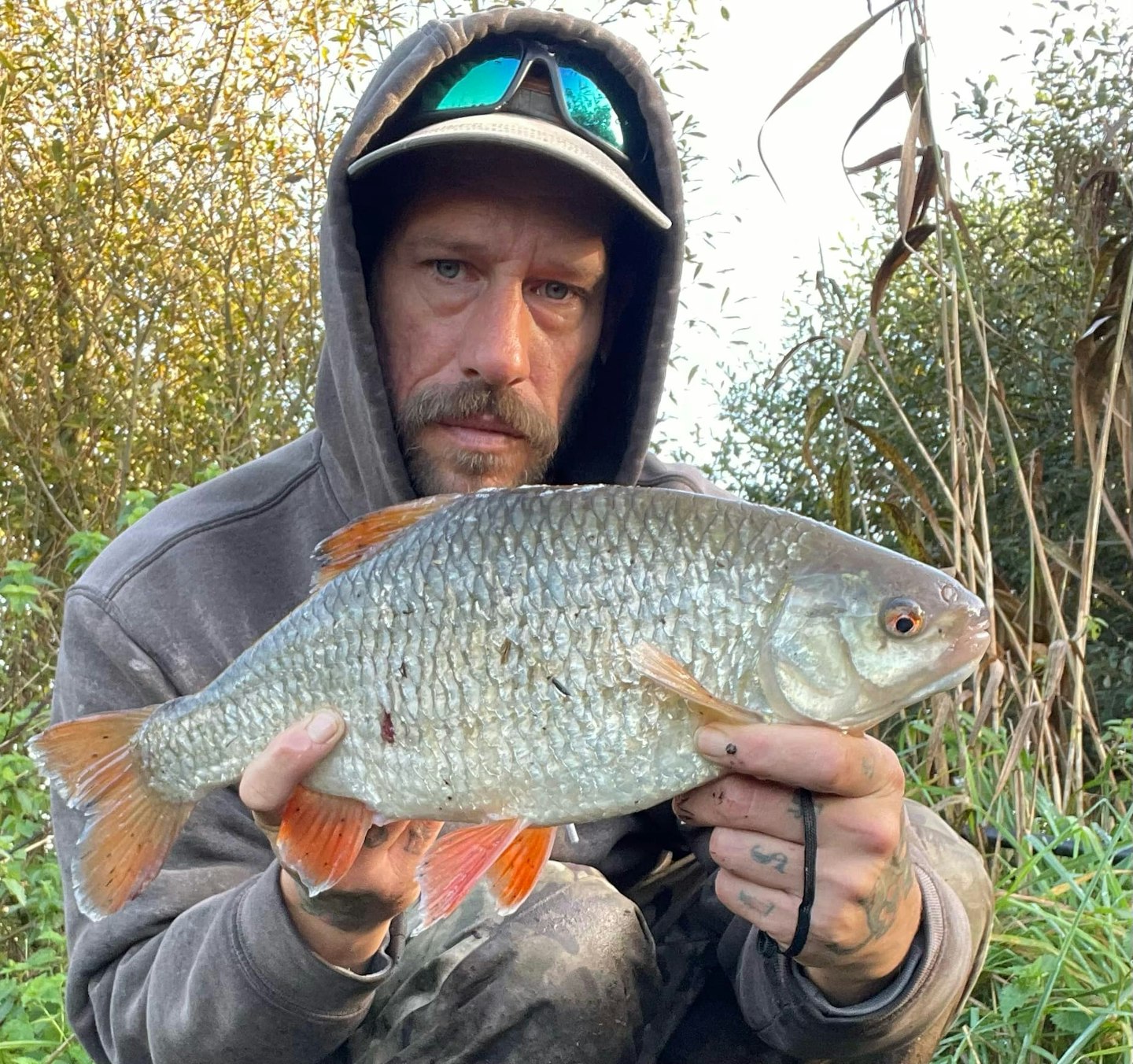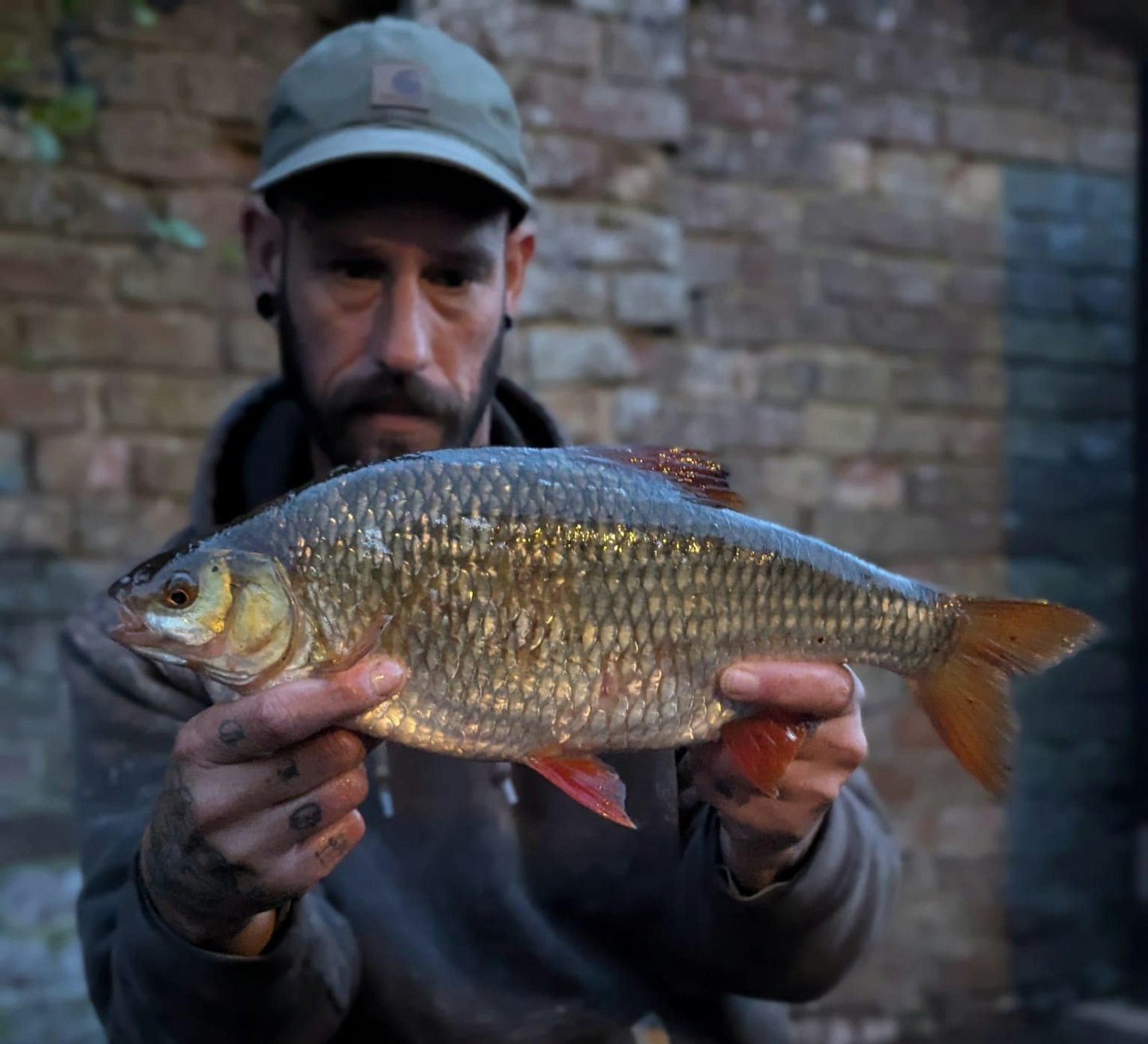Catching a specimen roach from the river is a feat that most anglers would love to achieve at least once in their angling lives. There is something truly special about catching a big bar of silver from flowing water, and with all the issues facing fish in our rivers, for a roach to get above 2lb or to reach the unbelievable 3lb barrier is incredibly difficult making them very rare indeed adding to their allure.
It is one thing to catch them on a feeder, but landing one on the float is considered the ultimate achievement. Matt Adams is one angler who has caught numerous roach over the magical three pound mark and with his expert advice, you too can bank your biggest roach ever.
Location
The old saying, "You can’t catch what isn’t in front of you," rings especially true when fishing for the elusive big roach— even more so in rivers. That’s why starting at a venue known for producing big roach is always the best approach.
When I begin a campaign, I spend a lot of time walking, watching, and feeding spots until I see some sign of fish. Typically, I look for rolling fish and once I spot activity, I assess the area and, depending on its accessibility, try to draw fish either upstream or downstream to a location where I can fish effectively. This can be done by fishing a few consecutive sessions in the same area or by pre-baiting.
For me, a good swim has a steady pace and is preferably close in, allowing me to fish with the lightest float setup possible. However, it should also offer the option of baiting a line further out in case the fish aren’t where I’d like them to be. In that scenario, I can switch to a longer rod and a bolo setup.
I prefer a bit of depth in my chosen swim, though it doesn’t have to be excessive—4 to 5 feet or more is ideal. The key is having a riverbed clear enough to consistently run a float through while maintaining control of the presentation.
IF YOU WANT MORE TIPS ON TROTTING A FLOAT, CHECK OUT THIS IN-DEPTH GUIDE.

Tactics
I generally have two rods made up with me—one heavier, with a bolo and bulk shotting, and the other much lighter, usually a stick float with a strung-out shotting pattern using the smallest shot I can get away with. I’m a real fan of No. 8 Stotts, as they’re soft and move well on most mainlines.
Setting up my rigs can often take a while, as I still use No. 8 shot even when fishing larger 10 or 12 x No. 4 sticks. To minimise bank disturbance when I arrive, I make my rods up before each session. I always start my sessions fishing as light as possible, so swim selection is crucial, as is knowing the right times to fish your chosen river. Inside creases and near-side cover are key areas to look for—not only do they hold fish, but they also allow me to present a bait effectively and as easily as possible.
I tend to fish short sessions, preferring to spend time locating the fish first. That way, I can be fairly confident that if fish are present, it won’t be long before I get bites. I’m also not afraid to move swims multiple times if I can’t locate them right away.
As for the fishing itself, I adopt a match-style approach—feeding little and often while fishing as light as I can. My thinking is that big roach aren’t stupid, so the better your presentation, the greater your chance of landing that fish of a lifetime.
THE BEST FISHING REELS WILL HELP YOU CAST AND CONTROL YOUR FLOAT WITH MUCH MORE FINESSE.

Use the right tackle
So, I guess I should start with my preferred choice of rod. I’m a big fan of spliced-tip match rods. I’ve got a 13ft and a 15ft John Allerton Premier Match, and since switching to the spliced tip, my catch rate has noticeably increased, with very few bumped or lost fish. My reels are Daiwa TDR 2058s, paired with Dave Harrell Pro Match line in 3lb.
As for terminal tackle, I love the Dave Harrell floats and use his sticks and bolos all the time. The Drennan size 18 quick links are great, as I aim to use ready-made hooklinks as much as possible. For hooks to nylon, I’m a big fan of the Drennan Carbon Match in either size 18 to 2lb or 16 to 2.8lb, depending on where I’m fishing and what baits I’m using.
IF YOU WANT TO LAND MORE FISH, USE ONE OF THE BEST FLOAT FISHING RODS FROM OUR BUYER'S GUDE.

Bait choice
For me, it’s all about maggots; if I can’t fish maggots, then I’ll use casters. For loose feed, hemp is a favourite of mine—I love the instant attraction it has for roach, and I know I can create a nice bed of bait won’t move too far, so there will always be something left in the swim.
I do like bread and have had lots of good days with it, but the venues I tend to fish can be very neglected and so I much prefer the instant appeal of livebait when there are no bleak or minnows present.
IF YOU AREN'T SURE HOW TO SETUP A FLOAT ROD, CHECK OUT THIS USEFUL BEGINNERS GUIDE.

Top tips
Use a bait your confident in, you may only get a small feeding window so make sure they want your bait first. Prebaiting can work wonders but you Ives to consider where you are fishing and if the bait you use will stay there long enough for the crafty roach to decide to feed on it…
Fish as light as you can get away with, and stay focused as the biggest of roach can give the smallest dip of the float. Use a good fixed spool reel. The last thing you want when you hook the fish if a lifetime is to be worried about a dodgy clutch or sticky line roller. And although centrepins are fun to use, I find they are too restrictive when specifically targeting big roach.

